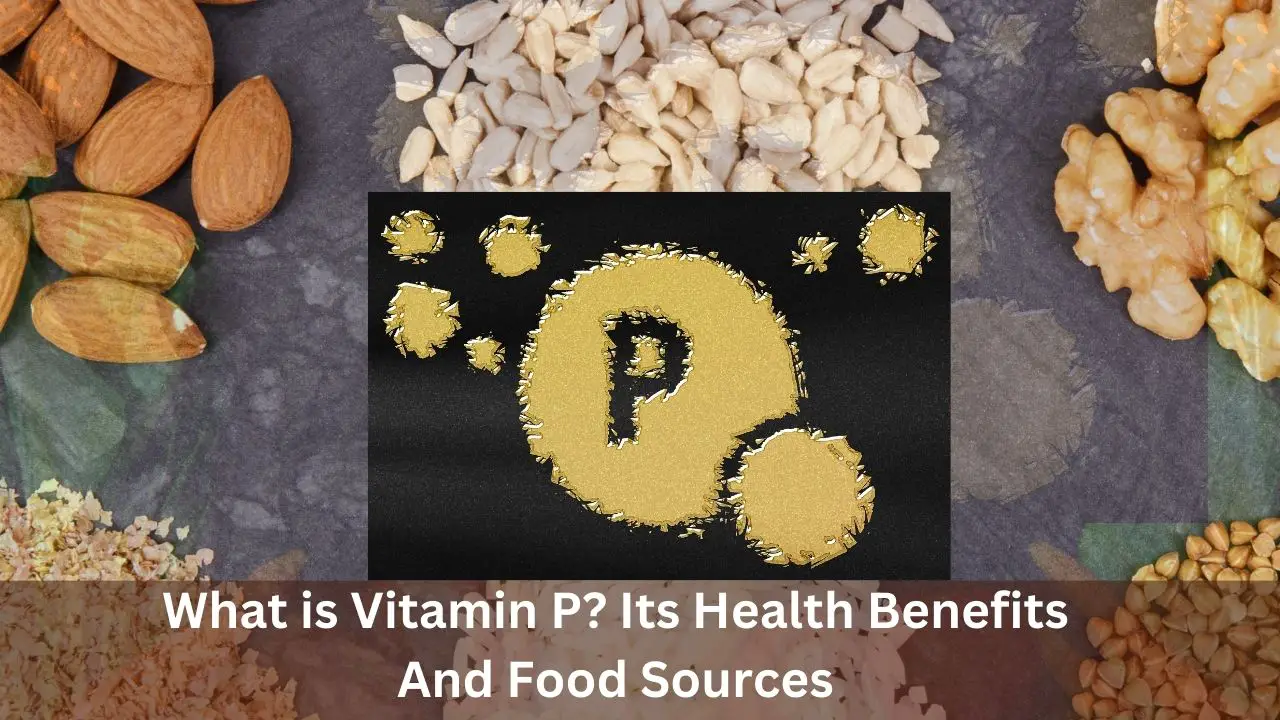Vitamin P was historically a term attributed to a collection of plant compounds known as flavonoids, although it’s important to note that these compounds are not classified as actual vitamins.
Within various sources like fruits, vegetables, tea, cocoa, and wine, diverse types of flavonoids can be identified. These compounds contribute to the distinct hues of certain foods, offer protection to plants against ultraviolet (UV) rays and infections, and are believed to hold potential health advantages.
This article offers an encompassing overview of vitamin P, encompassing insights into the distinct categories of flavonoids, their sources in food, and the potential health benefits they might provide.
Types of flavonoids and food sources
Flavonoids, also recognized as bioflavonoids, constitute a group of polyphenol plant compounds categorized into six subclasses. The current count of identified flavonoids surpasses 6,000.
Initially discovered in an orange by scientists in 1930, these compounds were originally deemed a new variant of vitamins, leading to their designation as vitamin P. However, this nomenclature has been abandoned due to the realization that flavonoids don’t fall within the vitamin category.
Flavonoids serve a protective role in plants, warding off infections, countering the impact of sunlight and environmental stressors, and attracting insects to facilitate pollination. Furthermore, they’re accountable for the vibrant hues seen in deeply-colored fruits and vegetables, such as berries, cherries, and tomatoes.
Below are the principal categories of flavonoids and their associated dietary sources:
- Flavonols: These encompass kaempferol, quercetin, myricetin, and fisetin, with flavonols being the most prevalent flavonoid in diets. They can be found in foods like olive oil, berries, onions, kale, grapes, tomatoes, red wine, and various teas.
- Flavones: Extensively present in various food sources, flavones are found in parsley, thyme, mint, celery, and chamomile.
- Flavanols and Flavan-3-ols: This subclass includes catechins, such as epicatechin and epigallocatechin, concentrated in black, green, and oolong tea. Flavanols are also found in cocoa, apples, grapes, and red wines.
- Flavanones: Responsible for the bitter notes in citrus peels, flavanones are prominently present in citrus fruits like oranges and lemons. Hesperitin, naringenin, and eriodictyol are notable examples.
- Isoflavones: Recognized isoflavones, like genistin and daidzin, are abundant in soybeans and soy products.
- Anthocyanidins: Anthocyanidins are the vibrant pigments behind red, blue, or purple fruits and vegetables. Fruits such as cranberries, strawberries, blueberries, blackberries, grapes, and red wine derive their color from compounds like cyanidin, delphinidin, and peonidin.
Health benefits: What is Vitamin P?
Flavonoids are believed to encompass an array of health advantages, contributing to the prevention of conditions like heart disease, diabetes, and various other ailments.
One of the extensively researched functions of flavonoids is their potential as antioxidants. Their capacity to diminish the generation of reactive molecules known as free radicals is well-documented. These free radicals are linked to cell harm and the onset of diseases.
Test-tube vs. human studies
A significant portion of flavonoid research has been carried out in laboratory settings, making the understanding of their function within the body relatively limited.
In fact, the absorption and bioavailability of flavonoids are generally regarded as suboptimal. Factors such as metabolism play a pivotal role in influencing the extent to which flavonoids can be absorbed in the body. Additionally, there is evidence to suggest that these compounds might be rapidly eliminated from the system.
Upon consumption, flavonoids undergo breakdown into metabolites, which can exhibit properties similar to the original flavonoids or differ from them.
Furthermore, investigations highlight that the bioavailability and absorption of flavonoids can be influenced by the presence of carbohydrates, proteins, or fats during consumption. The composition of gut bacteria also plays a role in these dynamics.
As a result of these intricate factors, it remains challenging to ascertain the precise mechanisms through which specific flavonoids impact human health.
What is Vitamin P? Possible health benefits
Despite existing limitations, certain human studies indicate potential health advantages linked to flavonoids. These benefits, often derived from their antioxidant properties and other intricate mechanisms, are not fully elucidated:
- Brain Health: Research on cocoa flavanols suggests their potential in safeguarding brain cells and enhancing brain health through interactions with cell signaling pathways associated with memory and cell survival.
- Diabetes: A review unveiled that a high dietary intake of specific flavonoids was linked to a decreased risk of type 2 diabetes. For every daily consumption of 300 mg of flavonoids, the diabetes risk decreased by 5%.
- Heart Disease: An analysis of 14 human studies revealed that the consumption of certain flavonoid classes, including flavonols, anthocyanidins, proanthocyanidins, flavones, flavanones, and flavan-3-ols, correlated with a notably reduced risk of heart disease (10Trusted Source).
While observations from certain studies imply potential protective effects of flavonoids against diseases, a more extensive investigation is imperative to fully fathom the scope of flavonoids’ impact on human health.
Moreover, this article offers a glimpse into merely a few of the conceivable health benefits attributed to flavonoids. The ongoing surge of research is dedicated to exploring the multifaceted functions and distinct categories of flavonoids, broadening our comprehension of their potential contributions to well-being.
What is Vitamin P? Dosage and supplements
Currently, flavonoids lack a set Dietary Reference Intake (DRI) due to their non-essential status for human development. A balanced diet centered around whole, nutritious foods inherently incorporates flavonoids, contributing to overall well-being.
Hence, while supplementation is unnecessary, it remains an option. Common flavonoid supplements encompass quercetin, flavonoid complexes, and rutin.
Guidelines for the dosage of flavonoid supplements are not standardized, varying for each type. The potential risks and side effects of these supplements remain largely uncharted territory.
Experts caution that while the consumption of flavonoids through dietary sources does not pose toxicity risks, high-dose supplementation may have adverse consequences. Thyroid function, medication interactions, and nutrient levels in the body could all be impacted by elevated flavonoid doses.
Additionally, it’s crucial to note that supplement regulation by the Food and Drug Administration (FDA) is not stringent, potentially leading to contamination or inaccurate label information regarding flavonoid content.
Furthermore, an abundance of research underscores that deriving nutrients from whole foods often yields superior benefits compared to their supplement counterparts.
If considering supplements, it is advisable to consult a healthcare professional, particularly if pregnant or breastfeeding. They can provide personalized guidance tailored to individual circumstances.
The bottom line
Flavonoids, previously referred to as vitamin P, constitute a broad category of plant compounds abundantly present in deeply pigmented fruits, vegetables, cocoa, tea, and wine.
Research suggests that these compounds possess antioxidant properties and could potentially confer protection against chronic ailments. Nevertheless, the impact of flavonoids within the human system might be constrained by factors such as metabolism.
To harness the potential advantages of flavonoids, embracing a diverse range of plant-based foods is advisable. Although supplements are accessible, their usage should be approached with caution and only under the guidance of a healthcare professional, given the limited comprehension of their effects.
Ultimately, prioritizing a varied diet rich in whole foods that serve as notable sources of flavonoids is likely to yield superior overall health benefits.



